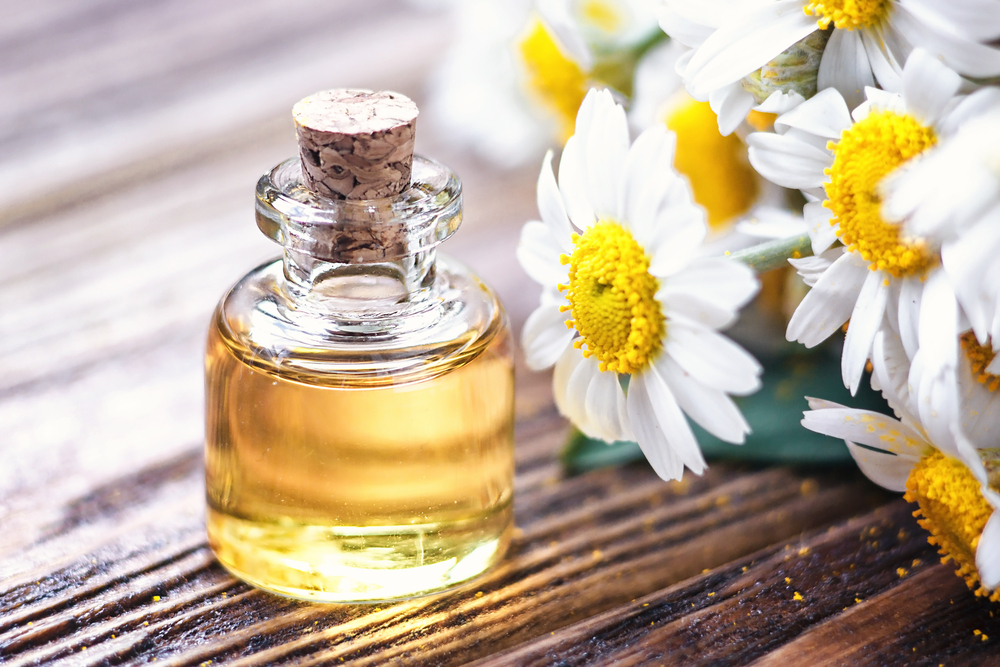 Herbal cosmetics are once again a fashionable trend. Nowadays, underestimated and inconspicuous chamomile is presented in a completely new version: as a component of cosmetics with soothing and brightening effects. Do you know all the properties of chamomile? Check them out!
Herbal cosmetics are once again a fashionable trend. Nowadays, underestimated and inconspicuous chamomile is presented in a completely new version: as a component of cosmetics with soothing and brightening effects. Do you know all the properties of chamomile? Check them out!
We are more eager to reach for easily accessible and simple cosmetic ingredients that grow all over. Chamomilla recutita is an annual plant with a characteristic scent. It is most often associated with herbal tea and used in herbal medicine. Nowadays, it’s more often used in cosmetics which gain significant qualities thanks to the content of chamomile.
Chamomilla recutita – things you had no idea about
The name Chamomilla recutita comes from Latin, but in fact, it belongs to the Matricaria genus and that’s how it should be looked for in the cosmetic composition. Matricaria chamomilla is a European species although, today it is also grown in Asia, North America, and Australia. In most countries, it is cultivated as a medicinal plant.
The white-yellow flowers offer the biggest benefits: essential oil (4ml for every kg), flavonoids, minerals, coumarin compounds, bisabolol, choline, B and C vitamins, as well as many other ingredients with valuable properties.
The chamomile season lasts from May to September. This is an important information for herbalists who would like to collect fresh chamomile and dry it for their own purposes. However, if we do not feel like wandering through the meadows and collecting chamomile on dry and sunny days, a good solution is to use ready-made cosmetics with chamomile or dried chamomile (available at any pharmacy).
What are the properties of chamomile?
- It has antiseptic properties.
- It relieves inflammation.
- It has antibacterial qualities.
- It has a relaxing effect.
- It helps to cure skin problems.
- It has brightening properties.
- It is a natural antioxidant.
Chamomile. How does it affect the skin?
A majority of chamomile-infused comsetics is designed for the care of sensitive skin and prone to irritations because chamomile is a natural soothing agent. It brings relief and provides antiseptic qualities. What’s more, it brings benefits when used both externally and internally. Chamomile extract applied to the skin, increases regenerating processes and it improves wound healing and also fights free radicals responsible for premature aging of the skin. Moreover, if we use chamomile for face care, it will brighten the complexion and minimize the signs of fatigue. Some people might benefit from its other property – strengthening blood vessels. Thanks to this feature, the owners of capillary skin can prevent excessive dilation of vessels and unbearable spider veins. Chamomile calms the inflamed areas, reduces redness, brightens acne scars. It works even in cases of ulceration, burns, wounds, etc. It is really universal and very effective preparation.
Chamomile. How does it affect the hair?
Chamomile extract is a common ingredient of hair and scalp care cosmetics. It is worth mentioning, that it can brighten the hair so if you’re a brunette, you might experience lightening of your natural hair color up to a few tones. Nevertheless, when added to a shampoo, it will soothe scalp irritations, the unpleasant feeling of itching and redness. This is, in fact, its most popular feature. However, natural chamomile used regularly also prevents hair from becoming oily and also eliminates dandruff. It is rich in minerals, vitamins and substances that perfectly nourish hair roots and give them vitality. As a result, chamomile reduces hair loss and makes the strands thicker and stronger. It adds flexibility and shine, and even facilitates hair styling. It is worth trying out hair cosmetics with chamomile when we expect natural and gentle care.
Cosmetics with chamomile – ready-made vs. homemade
Chamomile hand creams, chamomile toners, chamomile hair mists, chamomile soaps and chamomile shampoos – the diversity of cosmetics infused with this herb can be overwhelming. Nevertheless, it is definitely worth paying more attention to them because it might turn out that you will find your holy grail of cosmetics. All you need to do is to check whether the composition is natural and free of harmful substances (parabens, dyes, aromas, alcohol). It’s best if the chamomile is high in the composition. The closer it is to the end of the ingredient list, the more likely the product contains trace amounts of it.
Chamomile in cosmetics does not have to be used in the form of ready-made products. A good option is the use of a homemade infusion of chamomile or natural essential oil, which can be used as an independent cosmetic or a base for creating something new and fancy. By pouring a handful of chamomile flowers into boiling water and brewing for 30 minutes, we can make a natural chamomile toner. In a similar way, we will prepare a chamomile lotion, which we can lighten the hair and get rid of the unwanted yellow shade after color-treating to blonde.
















Leave a Reply